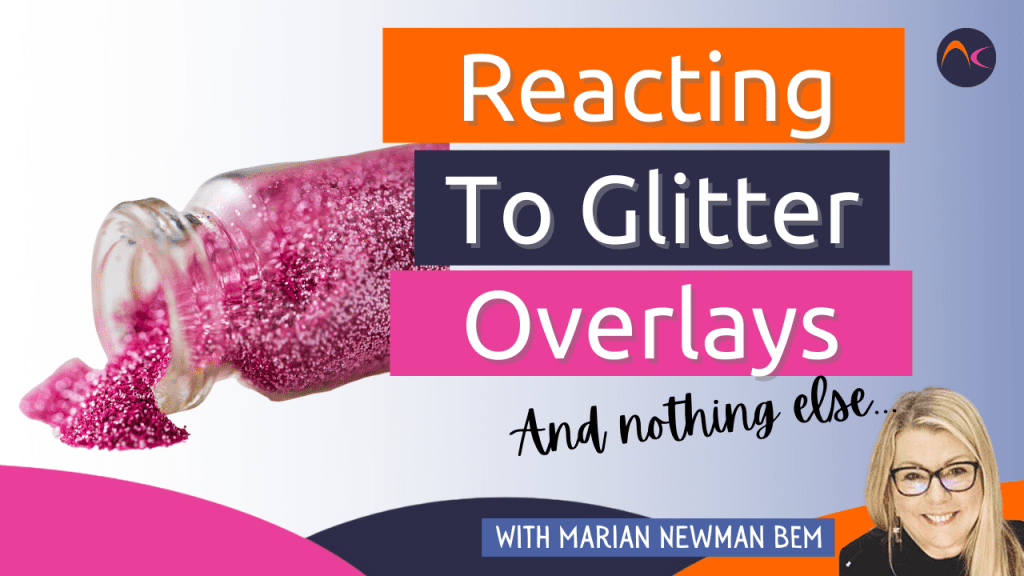This is being written in mid-December so there is lots of glitter around! Funny that!
It seems a lot of nail pros are reacting to an overlay when it contains glitter but not when it doesn’t.
Why is that? Well, let’s think about it…..
It is very unlikely that anyone will react to the glitter itself as it is a solid. It is, however, possible to react to a non-cosmetically approved glitter (i.e a craft glitter).
So what is going on? What may be going on is the glitter inhibiting a proper cure! (Please watch the Allergies and How They Happen video to get a better understanding)
The pieces of glitter may be too many and/or too big to allow the overlay, whether it’s a UV gel or L&P, to properly cure (the video will explain the polymer linkage). They may be blocking linkage and leaving some unreacted monomers behind which can then leach out!
Visualize this: watch how the polymer links are formed. Imagine a huge (and it is huge in comparison to the monomers) piece of glitter forms a ‘wall’ to prevent these links from happening. Unreacted monomers (or oligomers) can be trapped behind this wall.
Correctly formulated UV gel polish with glitter will have addressed this. It may be that the ‘manufacturers instructions’ recommend 1-2 very thin layers so there is not too much glitter that is stopping a ‘proper cure’. If not, the good quality brands will have made sure that an ‘undercure’ is unlikely to happen.
The same applies to L&P polymer powder and dip systems.
A polymer powder with glitter needs to be correctly formulated to allow a proper cure. PLUS there are manufacturers’ instructions on the ratio of powder to liquid monomer and the thickness of the layers of an overlay. (This is another reason to undertake brand education).
Dip powders have a similar potential issue. Those using a UV gel dip system, they dip an uncured UV gel coating into the powder. This sinks into the coating and is then cured. It COULD result in an undercured coating. It is less likely to occur with a cyanoacrylate dip system but not impossible.
Also, see the BPO(benzoyl peroxide) What and Why? blog on BPO allergies on polymer powders that are not formulated specifically for dipping systems.
There are some brands that suggest mixing pigments and glitters with their products. They should recommend the percentage that will still allow a proper cure. This is often 30% or less. For the bigger glitters, this is likely to be a lot less for all the reasons described above.
However, if you are reacting with or without glitter you DO have an allergy! The only way to address this is to remove all products and arrange for a dermatological patch test to discover exactly what ingredients you are reacting to. This will allow you to find a brand that you can continue to work with. Taking mediation or using creams only suppresses the symptoms. They DO NOT stop the cause which will be with you forever.
In conclusion, use good quality and trusted brands. They will have tested thoroughly for a proper cure and therefore avoid any unwanted reactions.


